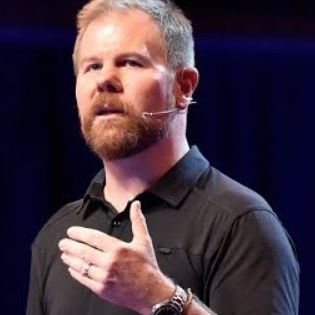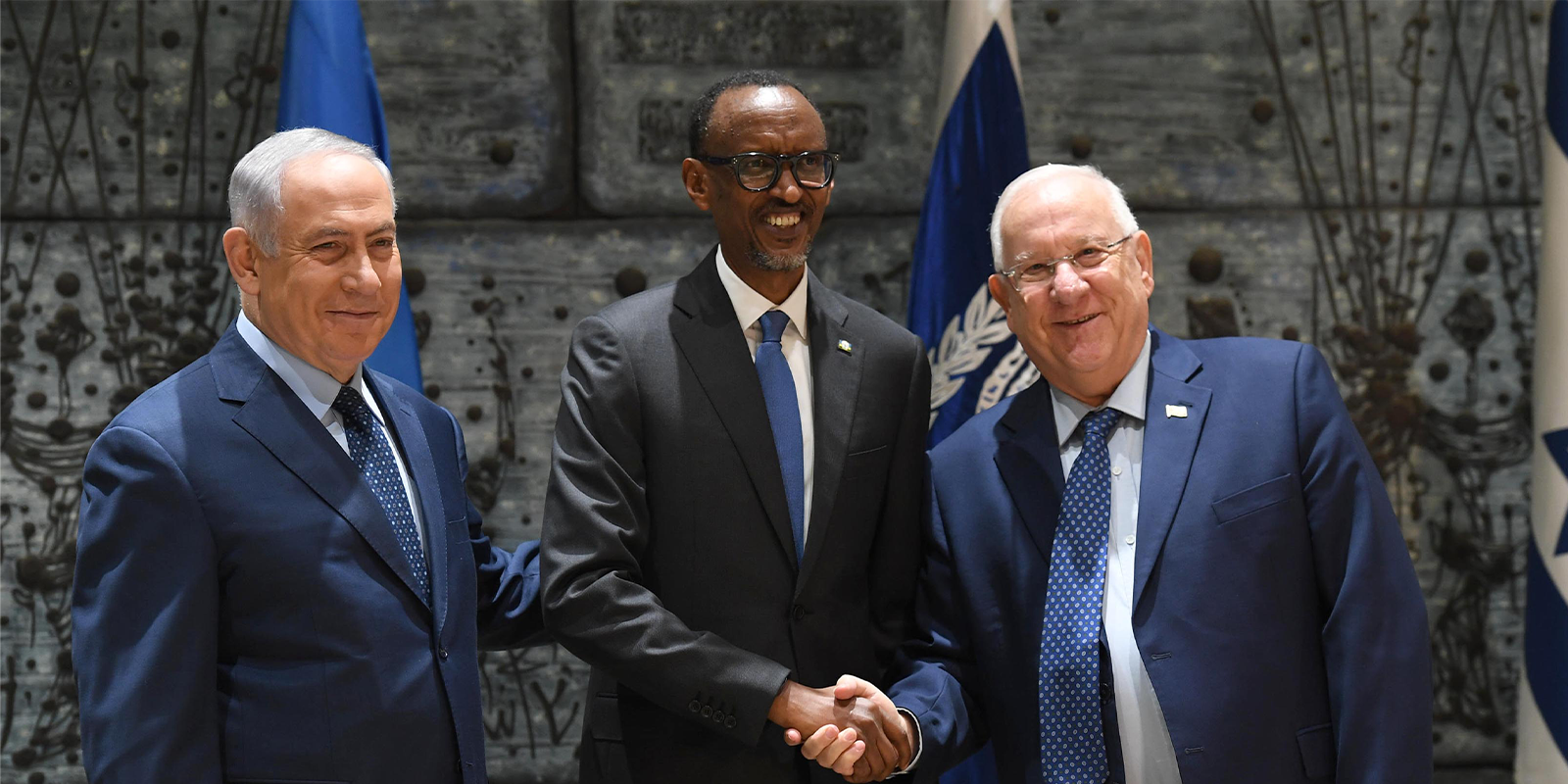News
‘I am Sorry for the Dogs’ — in the Ruins of Ukraine’s Kherson, Humanity Still Shines Through
It’s a city operating within the schizophrenia of governance and war, divided between two warring parties of different nationalities, one trying to rebuild; the other, to destroy. Kherson is probably the only place you will see garbage men and gardeners wearing flak jackets.

Former Director, The Brenthurst Foundation

Counter Insurgency; Urban Development Expert, Australia/US

On the outskirts of the village of Shevchenkove, halfway between Mykolaiv and Kherson, two Ukrainian flags flapped above freshly turned mounds, three more heroes added to the losses suffered by Ukraine’s armed forces since the full-blown Russian military invasion on 24 February 2022.
Such memorials are a common sight in even the smallest of Ukrainian communities. They are a constant reminder of the sacrifices being made by Ukrainians in this war to repel the Russian forces, losses of blood and treasure which continue to flow steadily.
The area between the two cities on the Dnieper River defines bucolic.
A winding 15km deviation to avoid a partly blown-up bridge takes one down a dirt road through waves of sunflowers, fields of which continue to the horizon, a visible reminder that Ukraine was, before this war, the largest sunflower producer globally, and the fourth-largest maize exporter. Today, 90% of the oblast’s lands are, according to Kherson’s mayor, Roman Mrochko, mined and thus impossible to cultivate, though farmers are taking mine clearance into their own hands.
As we near the city, the damage to farmhouses, plants and warehouses becomes more noticeable. By the time we reach the outskirts of Kherson at the village of Posad-Pokrovs’ke, it’s no longer bullet pockmarks and other exterior damage, but wholesale destruction. Houses with roofs are the exception; most are covered with blue sheeting supplied by a US NGO. Flags and signs warn of unexploded ordnance and mines. Petrol stations seem to have been a particularly tempting target for the invaders, their blackened, rusting carcasses twisted by heat in a grotesque death drill.
Once 300,000 people lived in the city of Kherson. Today, according to the deputy mayor, Vitaliy Belobrov, it houses just 93,000. In the suburb of Antonivka, just 2km from Russian forces on the other bank, nearly all the houses bear visible signs of the fighting and shelling. More than 2,500 houses have been destroyed by shelling, according to the city council, many of whose administrators work in a muggy, windowless (but comparatively safe) basement. Hospitals and schools have not been spared the carnage; all in Kherson have been damaged in the conflict. All classes were being held online.
The scars of war in all its forms
The cost of war can be counted in other ways. In the city cemetery, there are more than 70 military graves, more than two-thirds of which have been dug this year. They are bedecked with Ukrainian flags and bright garlands of flowers and embroidered cloths, with each grave recording a name, date of birth and a date of death. Attached to each wooden cross is a photograph of the victim, with some giving unit details and some with flags.
Kherson bears the scars of war in all its forms, modern and ancient. It has been a target of conventional warfare and the source of insurgency, the former by the Russian and Ukrainian armed forces, and the latter by the Ukrainian resistance.
In 2022, the Russians invaded Kherson Oblast (province) from Crimea, which had been annexed eight years previously. Despite the Ukrainians demolishing the main access route across the Antonivski Bridge, by 2 March 2022 the city was under Russian military control, the first major Ukrainian city to fall during the invasion, and the only regional capital that Russia managed to capture. Most of the rest of Kherson Oblast quickly followed suit, though Russian forces were stopped before Mykolaiv 70km away.
By late April, responsibility for administration and security shifted to the Russian National Guard and the Federal Security Service (FSB) of the Russian Federation, though the authorities worked through Ukrainian interlocutors with the presence, also, of the so-called Donetsk People’s Republic (DPR) militia. Moscow attempted annexation in stages by introducing the rouble as currency and removing the Ukrainian hryvnia from circulation, disconnecting Ukrainian cellphone services in May, and holding a disputed (and widely condemned) referendum in September, after which Russia declared it had annexed the Kherson Oblast.
Resistance to Russian occupation took two forms: direct attacks by the Ukrainian armed forces, including notably the 2022 Chornobaivka attacks which destroyed Russian supplies and equipment based at Kherson International Airport — what became known as the “Evening, we are from Ukraine” raid in which (per Ukraine) dozens of Russian helicopters and stores of ammunition were destroyed, and two generals killed. The second was in the form of the nascent Ukrainian resistance movement which staged several attacks and assassinations on government figures, including the vice-president of the occupation administration, Alexei Kovalev, who was killed along with his wife in his apartment in August 2022.
As ever, the divide between partisan and participant was blurred, the resisters relying inevitably on a wide network of passive and active supporters.
There are further contradictions, not least between limited and total war. Russia has been tempted if unable to carry out the latter, at least not yet.
Some of the Russian military tried to treat the locals with a modicum of respect at the start of the occupation. Katerina, who wears a yellow T-shirt emblazoned with the words “Believe in Yourself”, says: “They wanted to make an impression that they were good people, and would hand out food.”
But this changed as the Russians searched for signs of military activity and partisan support. As US-led forces discovered in Iraq and Afghanistan, Moscow found itself caught between wanting to appear a liberator and the reality that as an occupier they were automatically the oppressor.
The approach of Ukraine’s counteroffensive
In October 2022, with the approach of Ukraine’s counteroffensive, the Russian administration pulled back to the left bank of the Dnieper River, and Ukrainian forces entered the city on 11 November. Russia continues to assert its claim to the entire oblast, and shelling continued at the time of writing this article in early August. The aim appeared to be to harass and endanger Kherson’s citizens.
At least now, the Kyiv-appointed administration is back and trying to provide security and basic services.
It’s a city operating within the schizophrenia of governance and war, divided between two warring parties of different nationalities, one trying to rebuild; the other, to destroy. Kherson is probably the only place you will see garbage men and gardeners wearing flak jackets.
Not only has Kherson had to survive Russian occupation, but the effects of the breaching of the Nova Kakhovka dam in June, flooding parts of the city. Russia cynically destroyed part of the dam wall in an effort to slow down the anticipated Ukrainian counteroffensive, causing death and destruction in communities on the Dnieper’s banks — and to its own forces who were not forewarned.
Many pensioners of Antonivka once worked at the local glassworks. They gather at the bus shelter sorting through donations of clothes. While 70% of the city is without electricity, none has had power, gas or water for the past 10 months. Many have children and grandchildren elsewhere in Ukraine or outside, but none wants to leave.
The suburb, which once had as many as 10 shops, now has none. The local administrator, Sergei, who worked as a humanitarian provider during the Russian occupation, now distributes aid through four different outlets, one based at a former pre-school. The pensioners complain about the lack of basic medicines since their pharmacy was destroyed, and yet take time to display their humanity by pointing out the number of stray dogs, hard to miss as they stroll the streets. “We have no food to give them,” says Taisa Pavlova, “and a lot of them are sick.”
Ukrainians are, on average, four times poorer than Russians. The immediate effect of the war is to make poor people struggle more. “Our two strengths as a country were metallurgy and farming,” says Viktor, an entrepreneur and farmer from the region. “Now with the occupation of the east and Mariupol, we have only farming.”

The secret to Ukraine’s agricultural success is not just in its land and yields, he adds, but the Black Sea route to international markets. The price he fetches for wheat per tonne has fallen by more than one-third given the higher cost of truck and rail transport.
There is no second prize
The paradox between coloniser and liberator, and total and limited war, is repeated by the all-in nature of the conflict for Ukraine. The extent of its commitment is absolute; the costs of its defeat are measured in existential terms.
The stream of ambulances collecting casualties from Kyiv Station to ferry them to hospitals in the capital reminds that there is no second prize in this conflict, however constrained Russia might appear to some.
“This war is not about territory,” says former prime minister Yulia Tymoshenko. “For Ukraine, it is to be, or not to be. It is existential.”
Or as Oleg, an aid worker from Kherson who spent more than 70 days in detention in the company of the FSB, puts it in more gritty terms: “Russians typically have imperial ambitions. For them, the Ukrainian people are second-rate, little more than slaves. And it upsets them to have a neighbour who is making progress and its people living a better life than them.”
Kherson was founded by Prince Grigory Potemkin. A lover of Catherine the Great, Potemkin was made the governor-general of the “New Russia” of southern Ukraine. In 1776, he sketched the plan for the conquest of Crimea; eight years later he began the construction of the Black Sea fleet, building the arsenal of Kherson and the harbour of Sevastopol along with a new fleet of warships, some of which were constructed at Kherson’s great shipbuilding works, now dormant and at risk of Russian shelling.
Potemkin spared nothing in attempting to colonise the Ukrainian steppe. The cost led his plan to be abandoned, half accomplished. Even so, Catherine’s tour of the south of Ukraine in 1787 was a triumph for Potemkin. He is supposed to have disguised all the weak points of his administration by erecting artificial villages to be seen by the empress in passing. The term “Potemkin village” is today a metaphor for a façade, a cover-up for failure.
This may be a suitable metaphor for Russia’s 2022 invasion which, in the longer sweep of history, can only fail without the support of Ukrainians. Potemkin died in 1791 on his way to Mykolaiv to pursue peace negotiations with the Ottomans. His remains, which were buried in Kherson’s Church of St Catherine, were removed by Russian troops in 2022 and sent back to Crimea. Perhaps they knew something all along?
This article originally appeared on the Daily Maverick
Photo: Richard Harper

